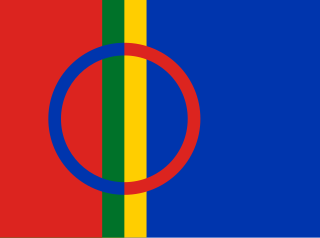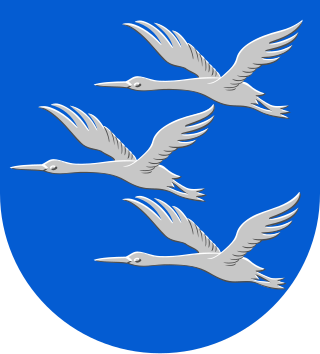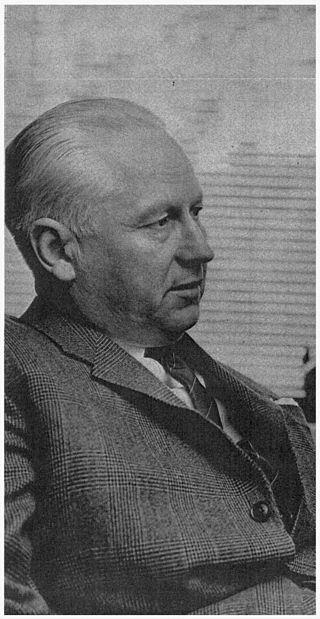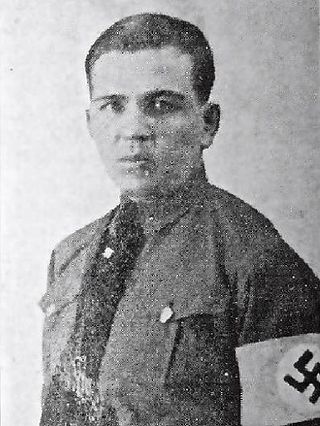Related Research Articles

The Sámi are the traditionally Sámi-speaking people inhabiting the region of Sápmi, which today encompasses large northern parts of Norway, Sweden, Finland, and of the Kola Peninsula in Russia. The region of Sápmi was formerly known as Lapland, and the Sámi have historically been known in English as Lapps or Laplanders, but these terms are regarded as offensive by the Sámi, who prefer the area's name in their own languages, e.g. Northern Sámi Sápmi. Their traditional languages are the Sámi languages, which are classified as a branch of the Uralic language family.

The Uralic languages form a language family of 38 languages spoken natively by approximately 25 million people, predominantly in Europe and northern Asia. The Uralic languages with the most native speakers are Hungarian, Finnish, and Estonian. Other significant languages with fewer speakers are Erzya, Moksha, Mari, Udmurt, Sami, Komi, and Karelian, all of which are spoken in northern regions of Scandinavia and the Russian Federation.

Inari Sámi is a Sámi language spoken by the Inari Sámi of Finland. It has approximately 300 speakers, the majority of whom are middle-aged or older and live in the municipality of Inari. According to the Sámi Parliament of Finland, 269 persons used Inari Sámi as their first language. It is the only Sámi language that is spoken exclusively in Finland. The language is classified as being seriously endangered, as few children learn it; however, more and more children are learning it in language nests. In 2018, Inari Sámi had about 400 speakers; due to revival efforts, the number had increased.

Äänekoski is a town in Finland. It is located in the Central Finland region, about 45 kilometres (28 mi) north of Jyväskylä. The town has a population of 18,067 and covers an area of 1,138.39 square kilometres (439.53 sq mi) of which 253.84 km2 (98.01 sq mi) is water. The population density is 20.43 inhabitants per square kilometre (52.9/sq mi).

The Institute for the Languages of Finland, better known as Kotus, is a governmental linguistic research institute of Finland geared to studies of Finnish, Swedish, the Sami languages, Romani language, and Finnish Sign Language.

Ter Sámi is the easternmost of the Sámi languages. It was traditionally spoken in the northeastern part of the Kola Peninsula, but now it is an extinct language; in 2004, only ten speakers were left. By 2010, the number of speakers had decreased to two. In 2020, they were presumed dead or uncontactable. Other estimates counted about 30 Ter Sámi speakers in Murmansk oblast, as well as in St. Petersburg, in 2007. The mean age of the youngest Ter Sámi speakers at that time was 50.

Nils-Aslak Valkeapää, known as Áilu in the Northern Sámi language and with the stage name of Áillohaš, was a Finnish Sámi writer, musician and artist. He was one of the most internationally recognised contributors of Sámi culture. He was mostly known for his joiks and poems. He was the official provincial artist of Lapland from 1978-1983. He was given the Nordic Council Literature Prize in 1991 for his work called Beaivi, áhčážan

The orthography used to write Northern Sámi has experienced numerous changes since the first writing systems for the language were developed. Traditionally, Norway, Sweden, and Finland — the three countries where Northern Sámi is spoken — used separate orthographies for teaching the Sámi within their borders. This changed in 1979 when a Saami Council-led effort to standardize a pan-Scandinavian orthography for Northern Sámi.
Sámi Čuvgehussearvi was an association that had as its goal the promotion of Sámi culture in Finland that was founded on 11 December 1932 at the Institute for Anatomy at the University of Helsinki by Väinö Lassila, J. Keränen, Paavo Ravila and P. Mustakallio. One of the major accomplishments that the society is remembered for in Finland was assisting in the evacuation of the Skolts from Pechenga. In addition, it irregularly published a series of grammars, dictionaries and books on the Sámi culture and people. In the beginning, this series was called Sami čuvgitusseärvi toaimatusak, although it was later changed to Sámi Čuvgehussearvi doaimmahusat to reflect its new spelling once the common orthography had been introduced.
Sääʹmođđâz is to date the world's only quarterly that has been printed in the Skolt Sámi language.

Toivo Immanuel Itkonen was a Finnish historian and linguist, specializing in the Sami languages and the history of the Sami people.

Sámi languages, in English also rendered as Sami and Saami, are a group of Uralic languages spoken by the Sámi people in Northern Europe. There are, depending on the nature and terms of division, ten or more Sami languages. Several spellings have been used for the Sámi languages, including Sámi, Sami, Saami, Saame, Sámic, Samic and Saamic, as well as the exonyms Lappish and Lappic. The last two, along with the term Lapp, are now often considered pejorative.
Sámi media refers to media in one of the Sámi languages or media that deals with Sámi-related issues in Norwegian, Swedish, English or some other non-Sámi language. The establishment of Sámi media in Norway coincides with the rise in nationalism there in the late 19th century. Much of the Sámi media has met the same fate over the years and been felled by a lack of funding or by going bankrupt.
Proto-Sámi is the hypothetical, reconstructed common ancestor of the Sámi languages. It is a descendant of the Proto-Uralic language.
Leif Rantala was a Finnish-Swedish linguist, and a specialist of Sami languages, cultures of history, especially of the Kola Peninsula.

Paavo Ilmari Ravila was a Finnish linguist and rector of the University of Helsinki.
Helvi Nuorgam-Poutasuo was a Sámi teacher, translator, and newspaper editor as well as a politician and a Sámi cultural influencer. She was the first lecturer in Northern Sámi at the University of Oulu.

Väinö David Lassila was a Finnish physician, anatomist and anthropologist who was a Professor of Anatomy at the University of Helsinki. He was the leading authority of the Finnish racial studies, but since the mid-1930s, Lassila dissociated himself from racial theories and became one of the prominent figures of Finland's human rights movement.

Hjalmar Thorvald Oljemark was a Finnish manor owner and a Nazi. He was one of the founders of the Nazi party called the Finnish People's Organisation and also worked as its propaganda chief and editor-in-chief of the party's newspapers.
The Saami Council Literature Prize is a literary prize for Saami literature first awarded by the Saami Council in 1994. At first, the prize was awarded annually, although starting in 2003, it has been awarded roughly once every two years with authors of children's and young adult literature being honored every other time.
References
- ↑ Richard B. Baldauf; Robert B. Kaplan (2000). Language Planning in Nepal, Taiwan, and Sweden. Multilingual Matters. p. 155. ISBN 978-1-85359-483-0.
- 1 2 Kirsti Paltto (Summer 2010). "Publishing Sámi Literature—from Christian Translations to Sámi Publishing Houses". Studies in American Indian Literatures. 22 (2). JSTOR 10.5250/studamerindilite.22.2.42.